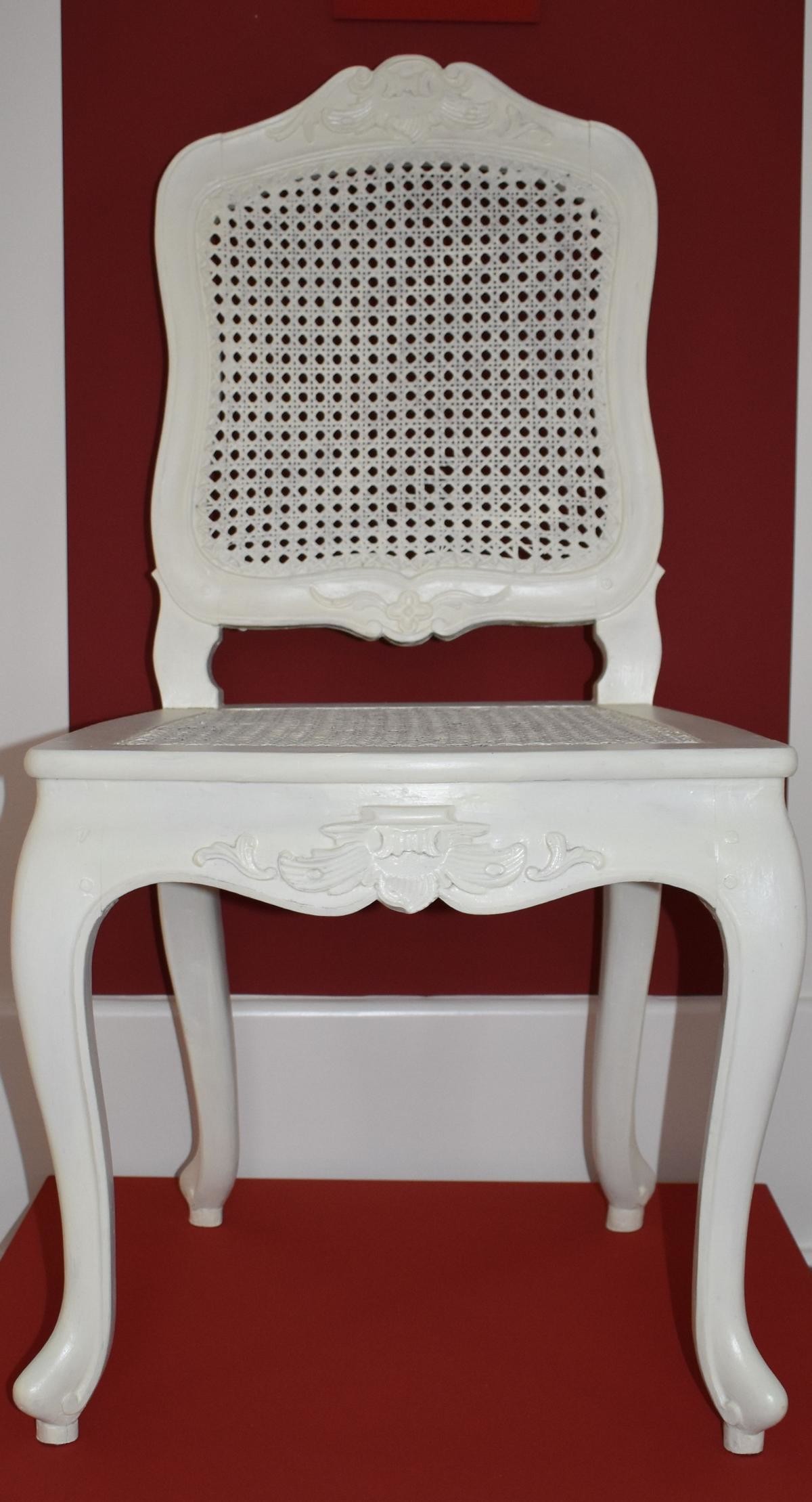Der Stuhl stammt aus dem Nachlass der Anna Ida Aurich (*1876), einer Ururenkelin von Christian David Waentig. Auf einem sehr ähnlichen Stuhl sitzend ist Waentig auf einem Porträt (Inv. 1954-440 ) verewigt.
Waentig war ein bedeutender Fabrikant in Großschönau. Im Jahr 1796 übernahm er von seinem Schwiegervater die sogenannte „Großschönauer Damastmanufaktur“. 1807 gründet er seine eigene Firma „Christian David Waentig und Söhne“ für die Herstellung und den Handel von Damasten.
en

